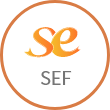18th Global Leaders Forum





18th Global Leaders Forum
18th Global Leaders Forum
South Korea has been bogged down at the two thousand dollar level for its GDP. For us to overcome this trap and proceed to a new level of prosperity, we generally need to transition society from a conventional efficiency-centered economy to a creative economy. An efficiency-centered economy is characterized by conglomerate-centeredness, cost-effective strategies, and the mindset that failure is bad. In contrast, a creative economy is based on a win-win ecosystem. It adopts value-centered strategies and the awareness that failure is the basis for innovation.
A creative economy is not convergence itself but making convergence easier. For this we should build a bridge of meta-technology and an innovative ecosystem so that ebullient creativity can be linked to innovative results. We also need to create an open platform through which those results can sail across the sea of market competition and safely reach the harbor of reasonable innovation. Small sizes are good at innovation competence and big sizes are better at market competence. A creative economy aims to overcome the paradox of "big and small" by constructing a complex business ecosystem.
The eight main strategies of a creative economy can be grouped into four parts: innovation, efficiency, fairness, and society. Innovation can be realized not just by opening new venture businesses but also by encouraging employees to use their innovation inside the company. Efficiency has the two pillars of open innovation and open platform. The fair framework of an innovative market and economic democracy play a critical role in making a virtuous cycle of these two parts. Cultural and educational innovation carried out by the society will act as the fundamental driving force for all of this. The main features of the innovation are the pursuit of education which has no right answers and not fearing failure.
The four columns of the Korean venture ecosystem, which blossomed to the point of making Israel show its envy in 2000, are the independent KOSDAQ market, venture certification system, stock options, and a technology exchange market. There has been a tendency to put the blame for business raiders on general venture entrepreneurs. It's time for us to get rid of the seeming venture promotion and pave the path for the second venture boom with the real ventures having high technology, high risks, high profits, and high employment. For this to occur, we'll have to restore the four main columns listed above and implement the following three complementary policies: abolishment of the founder's joint liability on guarantee, cloud funding, and education for entrepreneurship. When the success rate of R&D is 98%, we can't say that the nation has real R&D. It is inevitable to walk on the path of failure when we walk on the road that doesn't have answers. Let's fund real innovative ventures with micro angels, make the change of pre-regulation centeredness to post-punishment centeredness, and prioritize system building. Then will come the spring for Korean ventures as it did for NASDAQ.
Even in so-called market-failure areas in which public benefit is bigger than profitability, the government should increase the private voluntary contracts and learning from private sectors, increase its own organizational capacity.
Translation by Kang, Soo Jung
President of Salt&Light



